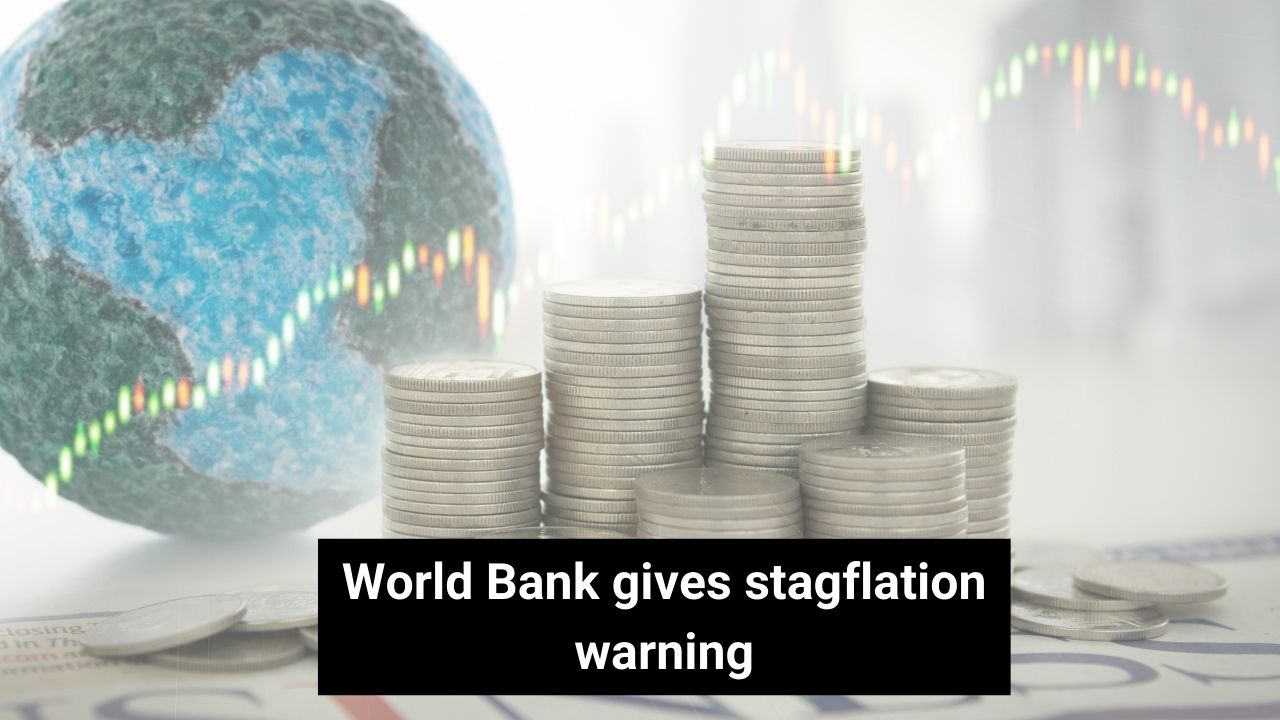World Bank warns of Stagflation Risk to the world economy

Last Updated: 8th June 2022 - 06:01 pm
On Tuesday, the World Bank downsized the global GDP growth to 2.90% from its original estimate of 4.1%. for 2022. In 2021, the global growth was 5.7%, so there is a lot of growth damage that is likely to happen in 2022. It has also lowered the growth forecast for India to 7.5%.
But above all, for the first time World Banks has given a clear and unequivocal warning about the risk of stagflation. Now stagflation refers to an economic situation when you have economic stagnation or low growth combined with high inflation.
In fact, the World Bank has warned not just for one year but it has warned of several years of high inflation and tepid growth. This, according to the World Bank, would be reminiscent of the situation in the 1970s, when economies were not growing and yet inflation remained very high leading to tremendous loss of purchasing power. This kind of stagflation hits the vulnerable sections of the economy like the lower middle class, MSMEs etc the most.
How did this situation come about?
According to World Bank, this could be an outcome of the combination of the COVID aftermath and the war in Ukraine. The COVID aftermath has seen investments slowing down and that is likely to impact long term growth.
At the same time, the war in Ukraine has created major supply chain problems leading to sharp spike in inflation across oil and other industrial commodities. The moral of the story is that the supply is struggling to keep pace with demand and that is creating supply driven inflation.
World Bank expects global growth to slump to 2.9% in 2022 from 5.7% in 2021. That is materially lower than the January 2022 forecast for 4.1% growth. What the World Bank has also warned is that low growth may not be a phenomenon restricted to 2022 alone.
It may get repeated in the years 2023 and 2024 also. That is because the war situation in Ukraine is likely to disrupt human activity, investment and trade even as the governments across the world gradually withdraw fiscal and monetary support.
Start Investing in 5 mins*
Get Benefits worth 5100* | Rs. 20 Flat Per Order | 0% Brokerage
The president of the World Bank, David Malpass, has painted a rather grim picture. According to Malpass, “Several years of above-average inflation and below-average growth now seem likely. Consequently, the risk from stagflation is considerable”.
Malpass has gone to the extent of warning that recession will be hard to avoid for most of the large economies as growth is hit by the war in Ukraine combined with lockdowns in China and supply-chain disruptions. Malpass has called to tweak fiscal and monetary policy accordingly.
The last time the world got to see a similar situation was in the 1970s, which was also a period of high inflation and low growth. Back then, a combination of oil shocks, high federal spending and loose monetary policy had caused inflation to soar to unprecedented levels.
The result was the Volcker policy which called for a string of rate hikes, which also resulted in scores of bankruptcies, both in the emerging markets and also in the developed world.
More than anything, stagflation presents a policy challenge. That is what the economists and policy makers are increasingly concerned about and that is what they should really worry about at this juncture.
Stagflation, according to the World Bank, is likely to damage living standards of people around the world, but more prominently in the lower and middle-income nations. That is where India may have a lot to worry on the policy front.
For a country like India, stagflation also means a serious debt on the per capita income. India already has a problem of sub-par per capita income which is less than $2,000 per year. That makes the Indian economy vulnerable to stagflation shocks, a lot more than others.
Even Janet Yellen, Treasury Secretary, had noted that stagflation was having the undesirable effect of depressing output and spending and raising inflation all around the world.
For India, the challenge will be on the policy front. It will be a tightrope walk; containing inflation without allowing growth to slip too fast. The truth possibly lies somewhere in between.
- Flat ₹20 Brokerage
- Next-gen Trading
- Advance Charting
- Actionable Ideas
Trending on 5paisa
Disclaimer: Investment in securities market are subject to market risks, read all the related documents carefully before investing. For detailed disclaimer please Click here.
 5paisa Research Team
5paisa Research Team